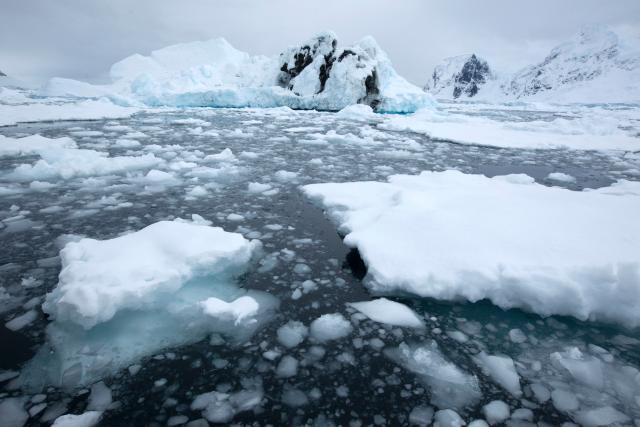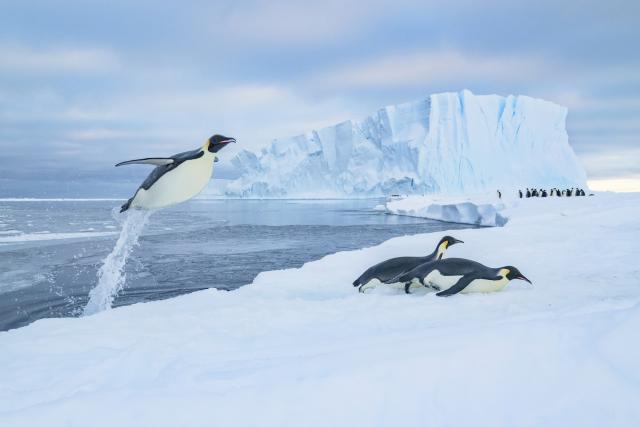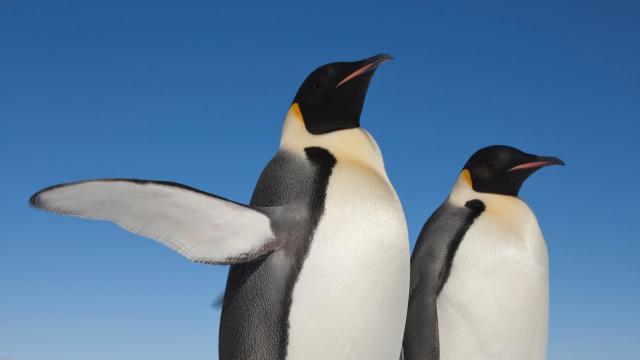
The issue
Emperor penguins have an unusual parenting strategy. Unlike other penguin species, they raise their chicks on a floating platform of sea ice connected to the shore, known as fast ice. It’s a precarious way of life, and recent changes in our climate have made it even more difficult.
Antarctica’s sea ice is shrinking fast, and the effects can be devastating. Every summer, huge chunks of floating sea ice break up. This usually marks the point at which penguin chicks start their own journey in life and head off into the open ocean.
But if the sea ice breaks up too early, the chicks are forced into the water before they’ve grown the waterproof feathers that protect them from the cold and help them swim. In 2022, we had terrible news. Many emperor penguin chicks had sadly drowned when the sea ice they were nesting on broke up early. Incidents like this are worrying and in the future, colonies may not be able to successfully raise their chicks if sea ice continues to break up early.

The Solution
We've partnered with British Antarctic Survey (BAS) to search satellite images to find and track emperor penguin populations. This work helps us monitor how penguins are responding to their changing home. Our findings then allow us to help push for global action to slow climate change and buy emperor penguins the crucial time they need.

Result
Amid the challenges is a glimmer of hope. Some of the colonies badly affected by the early sea ice break-up have shown signs that they may be adapting by relocating to more stable areas, including icebergs and ice shelves (extensions of thick land ice).
This isn’t the only promising sign. Recently, satellite images helped scientists discover four breeding colonies that hadn't been recorded before. They also rediscovered one that was believed to have vanished. These exciting discoveries all help form a wider picture of emperor penguin populations and how we can help to protect them in the future.
“The fact that we’re seeing the worst-affected colonies start to adapt gives us hope that emperors can react to their changing environment and move to find more stable ice.”
Peter Fretwell, BAS scientist
